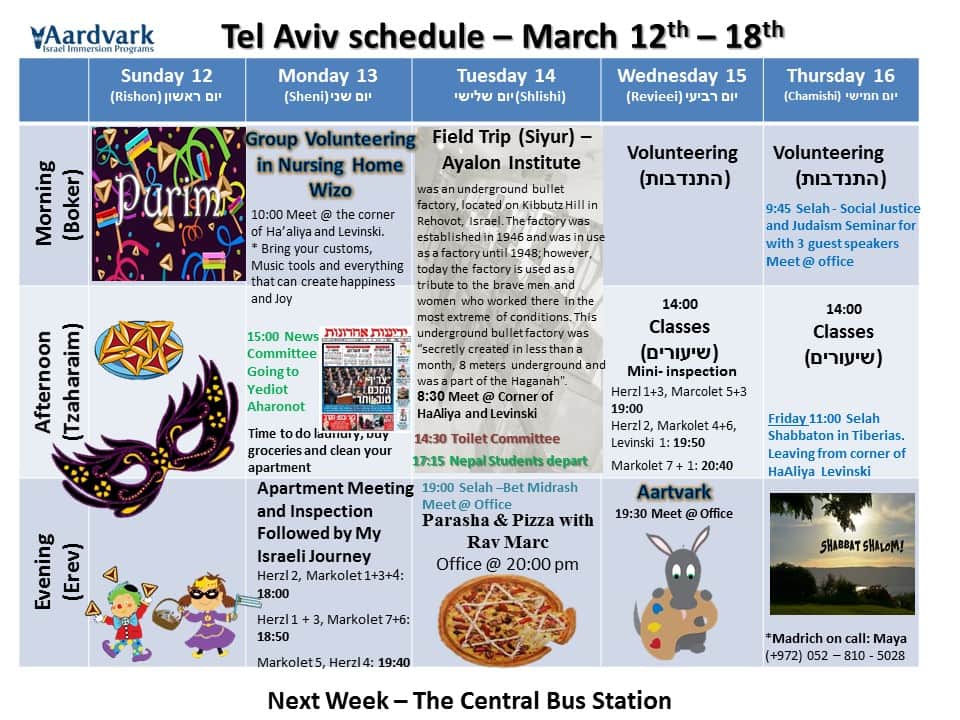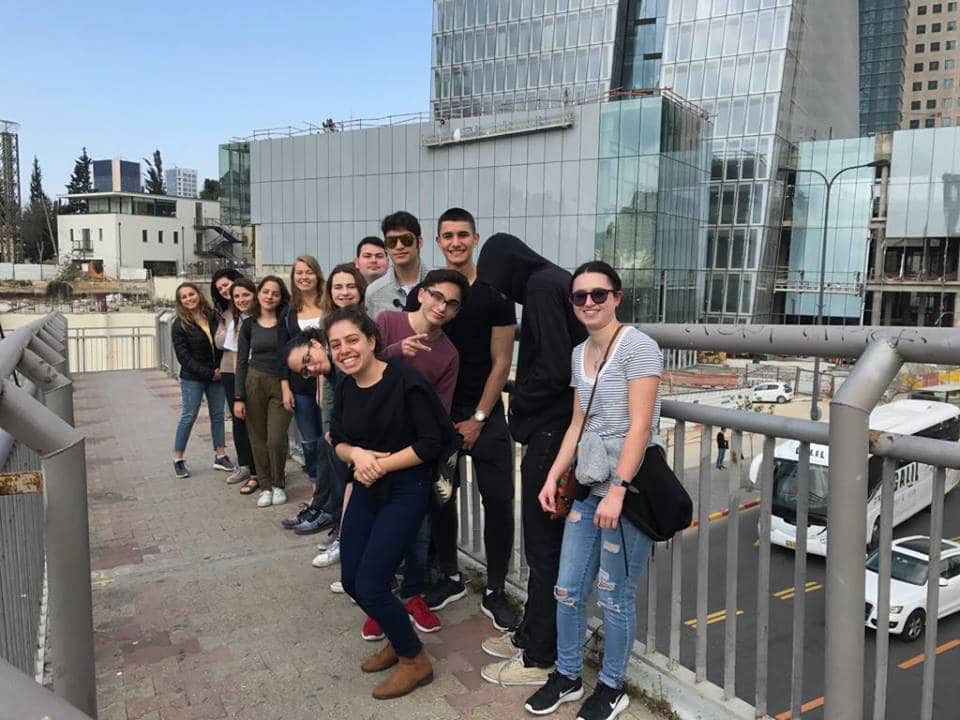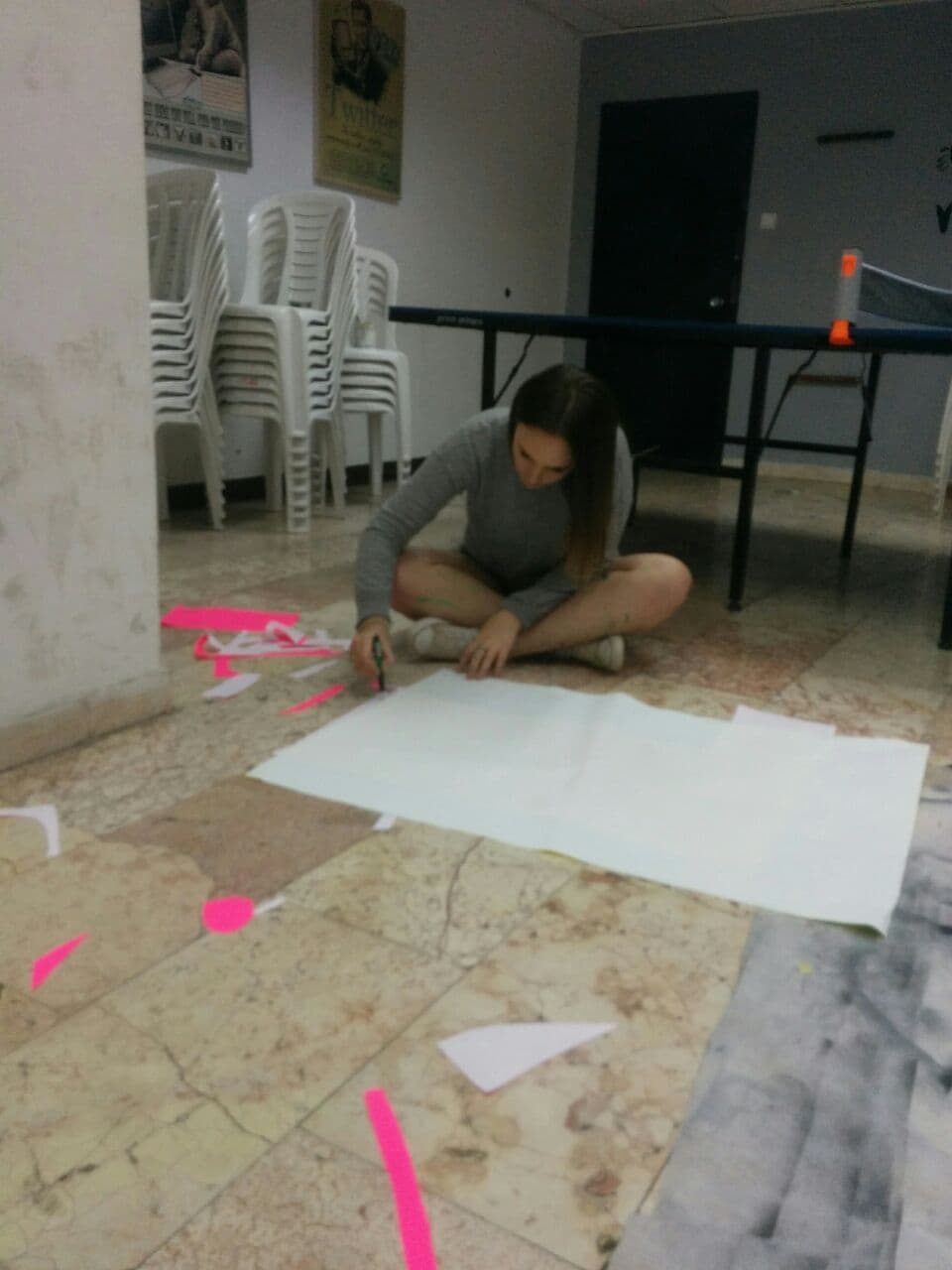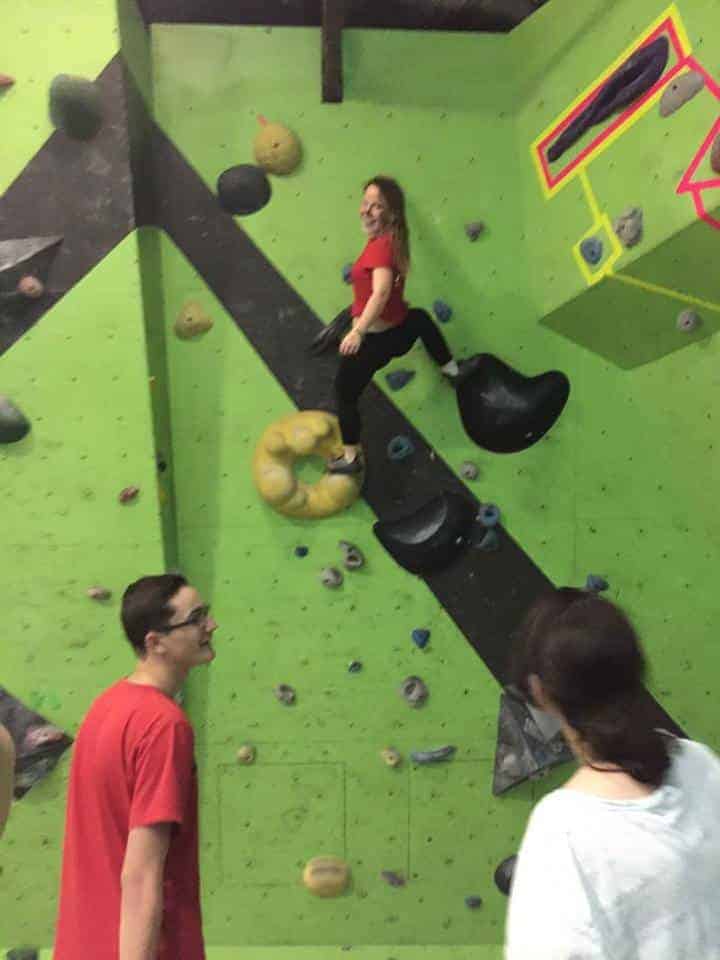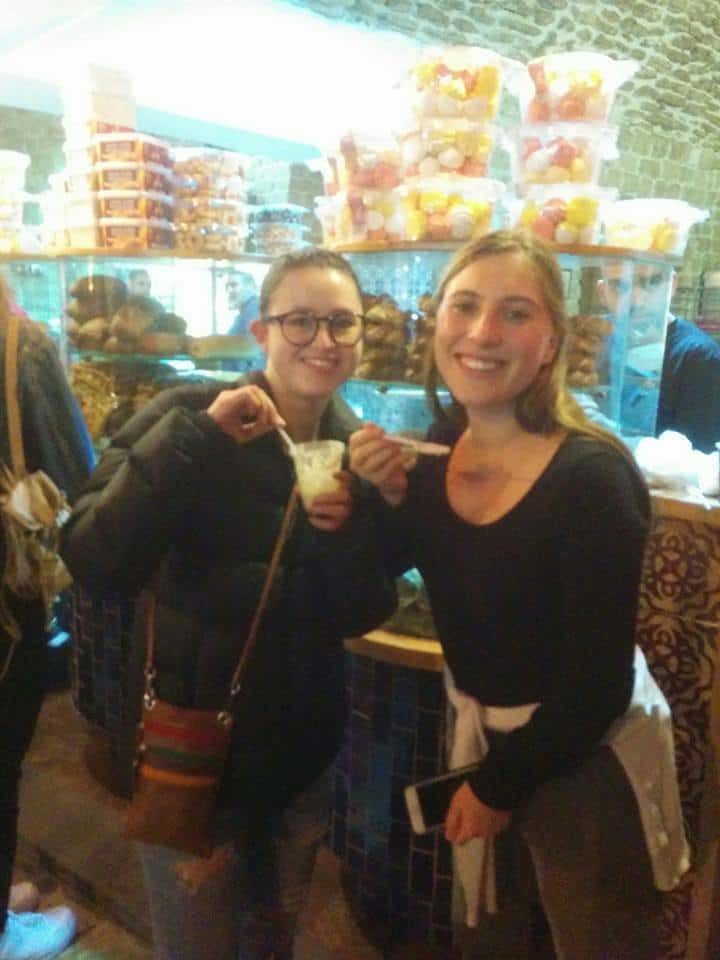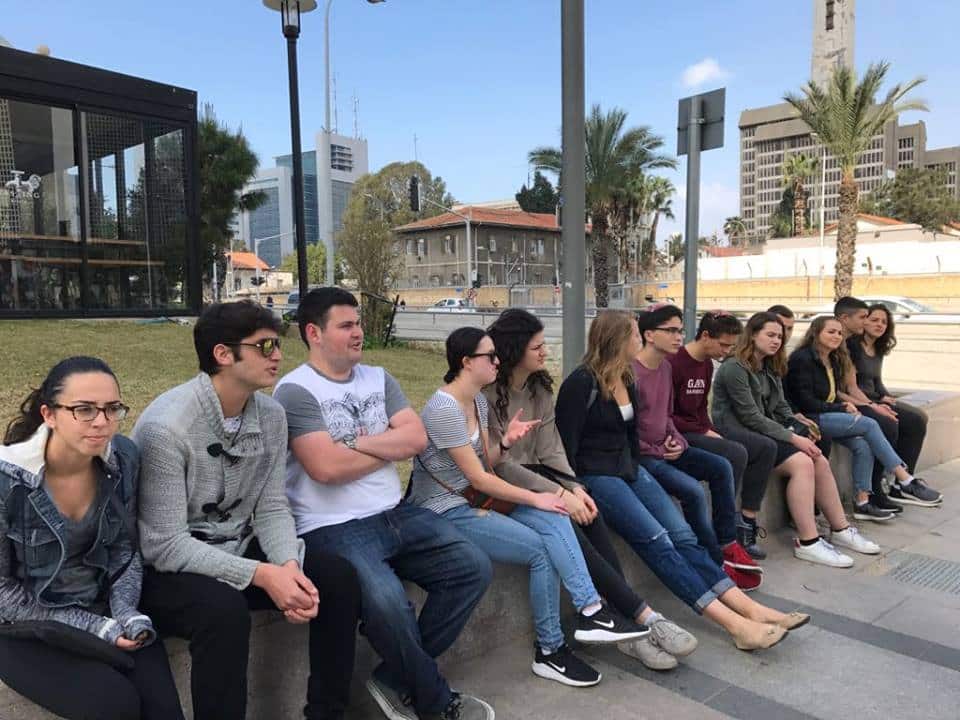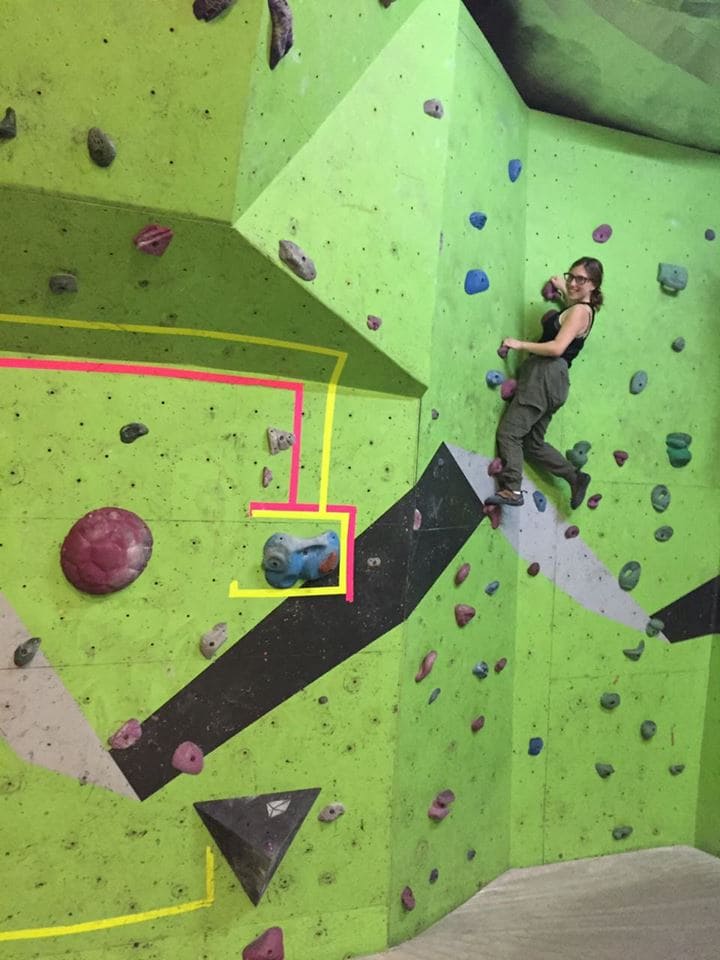Shalom Parents,
March has arrived together with spring. I am telling you this because at Aardvark we celebrate the arrival of the spring with “Break Out March” You may ask “what exactly is that?” It is a platform we created for the students to help them to take a step forward, leave their comfort zone and do something they have put off for too long. Or, as Kelly Clarkson says, “Take a risk, take a chance, make a change and break away…” (Click Here if you want to listen).
As a result, instead of the regular apartment meetings the staff met the students in the office for the official opening of “Break Out March”. The activity began with the students answering a series of questions about themselves and their experiences on the program so far. Then the students decided to create a goal for “Break Out March”, which necessitated a meaningful discussion between staff and students about how the best way to achieve their set goals. Hopefully this activity will spur the students to make the most from the last months on the program and help them achieve their objectives.
On Monday evening we all went to Jaffa for a tour about co-existence in the area and in Israel in general. As we started in the Jaffa port, the guide told us that due to the Jaffa’s position it has a history of conflicts going back more than 3500 years. Wars, riots and hatred go hand in hand with the beautiful and peaceful place we call Jaffa. As we walked through the narrow alleyways, we saw the “Floating Orange Tree” made by Ran Morin. A very interesting piece of art.
At the end of the tour we went to a mosque where met a very interesting person called Ehab. Ehab is the Imam of the mosque and Islamic community in Jaffa. He showed us the mosque and daily schedule as a leader of the Islamic community. The students had the opportunity to ask him questions (I was proud to hear their smart queries and respectful questions). Many questions about the conflict, the Islamic population division in Jaffa and about the Muezzin. At the end of this great discussion, Ehab invited his Muezzin to sing for the students. His voice amazed the group! His beautiful singing astonished us.
On a personal note, I can tell you that I have already done several tours in Jaffa. This one gave me an entirely new perspective of this beautiful city.
On Tuesday morning the group went to Sarona, a Templar colony formed by German settlers in 1871. This agricultural German settlement became a model for the Jewish pioneers. During WWII and the rise of the Nazi empire many of the Templars became members of the Nazi party. As a result, they were locked up by the British forces and eventually deported. Today Sarona has been transformed into a BEAUTIFUL hangout location and a tourist center. It is full of stores, parks, and the amazing “Sarona Market”. After the tour the participants stayed to enjoy the vibrant atmosphere.
This week in Parsha and Pizza, Rabbi Marc led a discussion about some of the interesting themes of Purim. The group talked about feminism and power roles with an analysis of Esther’s heroism. They also touched upon the idea of chance as opposed to providence through looking at Haman’s evil plans and God’s hidden nature in the story of the Book of Esther. Finally, we looked at the 4 key customs of the day – hearing the Megillah, having a feast (with lots of wine), sending parcels of food and treats to people and giving money to the poor. Each of these things in Hebrew start with the letter Mem (מ) – Megillah (מגילה) Mishteh (משתה) Mishloach Manot (משלוח מנות) and Matanot LaEvyonim (מתנות לאביונים)
What could be a better activity than a “Facing Challenges Workshop” in a rock climbing gym? On Wednesday the students went to a rock climbing gym. It is a gym for beginners and advanced climbers. It is divided into difficulties with colored strips; V0 is the easiest and so on. Daniel wanted to give the students a lesson about facing challenges and she didn’t allow any of the students to quite in the middle of a climb. They were all exhausted afterwards and said that Daniel pushed them as far as they could go… Afterwards she talked to some of them about facing challenges in actual life. Personally, I love the metaphors of this workshop, for example – when rock climbing if it becomes very difficult all you need to do is concentrate on the next rock and after you reached it you go to the next one and so on…
This last week or so on Selah has been very busy. A week ago the group had a tour of the new wing of the Museum of the Jewish People (http://www.bh.org.il/). Our guide Dror led us in a workshop about our roots and shared Jewish heritage before walking us through some fantastic exhibits – including a temporary exhibit on Bob Dillon and the stunning hall of world synagogues. We were even allowed a special entrance into the Children’s Wing where they have a new installation on Jewish heroes. At the end the group had a surprise meeting with Naftali Bennett, the current Education Minister and head of the Jewish Home political party. On Sunday, in Lunch and Learn the group was treated to a meaty meal whilst learning with Rabbi Marc as preparation for Purim. The group began by thinking about the beautiful queens Vashti and Esther and how they are portrayed in the Megillah before looking at rabbinic ideas of beauty in our tradition. At the Bet Midrash on Tuesday we had a group speaker, Rabbi Avi Hill, originally from London, who managed to wow the group with a Purim class that focused on Bible Codes and the connection between Purim and the Holocaust (see here for an article explaining more). Finally, on Thursday we were back with our regular Selah guide Eytan Rund for a Tanach Tiyul to Tel Tzafit and Khirbet Kayafa. There we learnt about several stories from King David’s life and saw the Philistine city of Gat. Next week the group is headed for a Shabbaton in the holy city of Tiberias. All in all, a great week of learning!
In Social Psychology, the students are learning the differences between Two-Factor of Emotion theory and Appraisal Theory of Emotion. Two-Factor of Emotion theory states that people observe their behavior and then try to explain why they are behaving in a particular way. This theory further indicates that there must be a physiological arousal as a primary factor to their emotional responses. The Appraisal Theory of Emotion states that our emotions are a result of how we interpret and explain our circumstances/events even in the absence of physiological arousal. In the absence of physiological arousal, we decide how to feel about a situation after we have interpreted and explained the phenomena.
I recently noticed that Rickie Studencki produces an online Podcast in which he interviews inspiring people. I’ve asked Rickie to write a little bit about it:
Perspectives On Fire,
Before I came to Israel, I started my own podcast called Perspectives On Fire. Perspectives On Fire is an audio based talk show that I founded with the aim of giving people a broader perspective on the world we live in. We do this by discussing different topics ranging from space to education with fascinating people.
I decided to do interviews with people because it was something I have wanted to do since my last year of high school. I loved listening to podcasts such as London Real, The Joe Rogan Experience and The Tim Ferris Show because they educated me more about the world we live in through sharing great ideas with high performance individuals. Also, it was more authentic and I felt that I got more value from it than listening to mainstream media.
So far, I have done 10 interviews with 7 people from Australia, 2 people from Israel and 1 person from Ethiopia. I would like to invite you to listen to two of my best interviews. That is with Debbie Goldsmith who is the Co-Director of Aardvark Israel and Peter Davison who was the First Seed Investor of PayPal. You can listen to them on iTunes Podcast and Soundcloud.
Debbie Goldsmith: Aardvark Israel
https://soundcloud.com/perspectivesonfire/debbie-goldsmith-aardvark-israel
Peter Davison: First PayPal Investor
https://soundcloud.com/perspectivesonfire/peter-davison-first-paypal-investor
Thank you Rickie – you are doing amazing work!
Before I start my weekend and one of my favorite holidays (Purim), I wanted to share with you something Rabbi Marc Kaye wrote on this lovely holiday:
“One of the best known customs of the Purim holiday is the importance of drinking alcohol. Over 1500 years ago the Talmud taught that on Purim ‘a person is to get so drunk they cannot know the difference between Blessed is Mordechai and Cursed is Haman’ (Babylonian Talmud Megillah 7b). This is the only time in the year that Judaism sees it appropriate to not only sanction consumption but appears to encourage it. A lot of important Jewish thinkers and law-makers historically have tried to shy away from the statement in the Talmud by reminding us of the dangers of getting drunk and that drinking can lead us very far away from being able to appreciate God’s great miracle and other themes of the day. So why is drinking wine mentioned at all?
Like in many Jewish holidays we tend to re-enact our history. So on Pesach we eat Matzoh just like the Jews did when leaving Egypt and on Succot we sit in little booths. On Purim the story of the Jews’ rescue is framed by feasts where drinking and merriment took place. The people celebrate with King Achashverosh at the beginning of the story with a huge party. Esther invites the king and Haman to a feast as part of her plan to frame Haman. After the Jews are saved, the story ends with the Jewish people having a feast. So part of what we do today on Purim is to re-enact what once was.
But I would like to share an additional thought of the Hassidic Master, Rabbi Nachman of Breslov from the 18th century. He noticed that the Talmud stresses the importance of not knowing the difference between Haman and Mordechai. The secret of wine for him is that it teaches us how to get closer to knowing God. How? Most of us in the Western world appreciate people with knowledge and learning. We admire those who are smart and get good grades. We value the intellectual. But there is a problem with knowing. It is limited: Let’s say there is a person who exists that knows everything there is to know. Impressive right? Rabbi Nachman teaches us that there is one thing that even the most knowledgeable person cannot ever know – knowing nothing. As a mystic he teaches us that the only way to full knowledge is to let go of knowing. To know nothing. This is his mystical lesson of the goal of drinking on Purim.
I would like to wish you all a Purim weekend of happiness and joy and hope that your children get an amazing taste of this beloved holiday here in Israel too.”
Thank you Rabbi!
That will be all for now,
Until next time,
Shabbat Shalom,
Adi.
